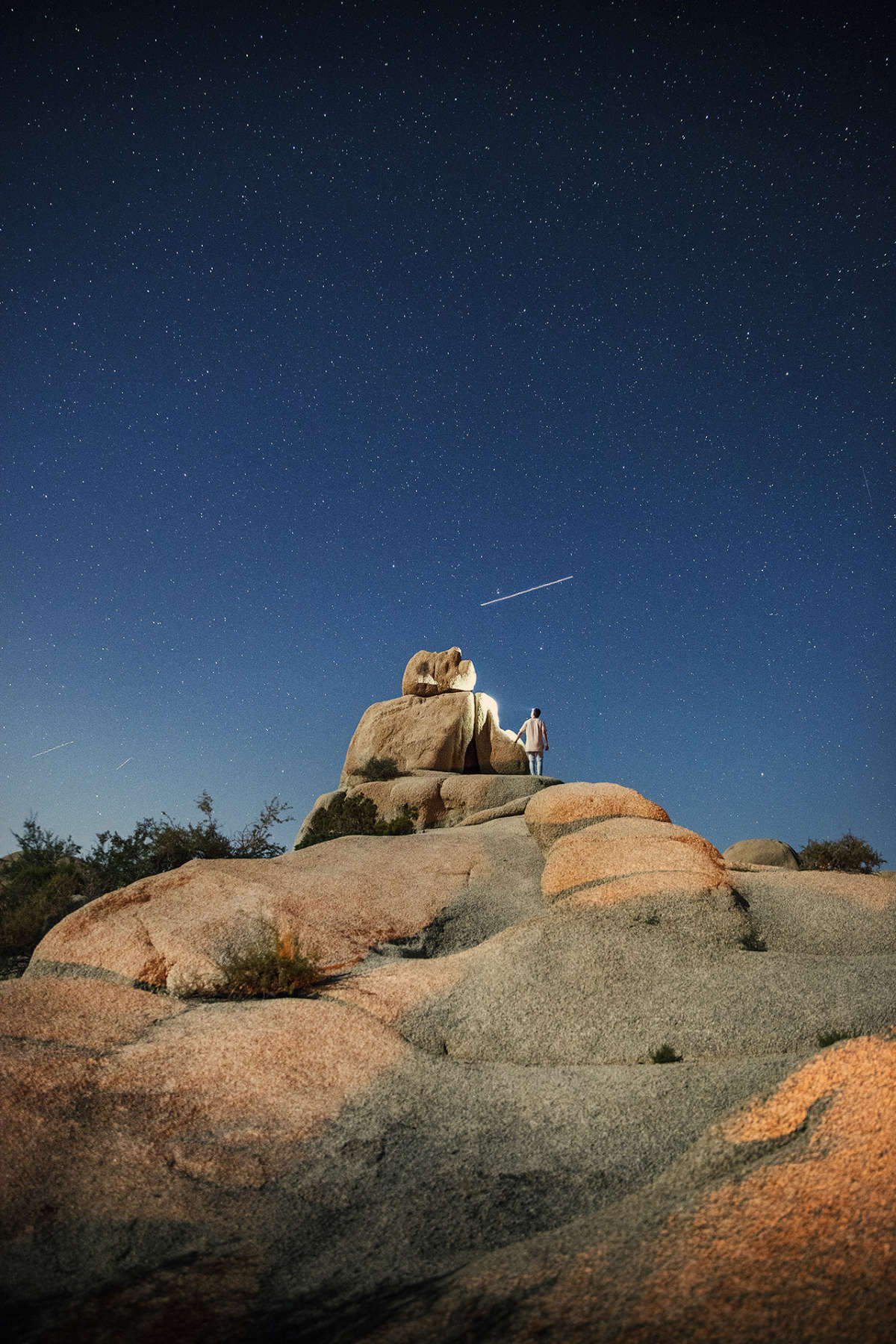Day and Night in Joshua Tree
What to Do and See in Joshua Tree National Park

I felt like a spaceman for our 3-day adventure in Joshua Tree National Park!
 This is a single photo with the moon lighting up the landscape, my headtorch shining on the rock, and a plane trailing overhead.
This is a single photo with the moon lighting up the landscape, my headtorch shining on the rock, and a plane trailing overhead.
There are hundreds of thousands of acres of designated wilderness split between two deserts, the Mojave and Colorado. It’s a strangely beautiful place with some of the most unique plants, wildlife, and landscapes we’ve seen so far on #TheBigTrip.
During the night, you somehow feel closer to the stars. I wanted to reach out and touch them!

It's become a very popular destination to watch the Milky Way. Unfortunately for us, the full moon was sitting right in the centre of the Milky Way, so there was no chance of us capturing it during our stay. I hear when the conditions are right the park can get very busy and crowded though. Something to keep in mind if you're planning to visit the park for the stars!
The great thing about having the full moon was that the landscape was in its spotlight almost all night. I barely needed my headtorch to walk around the park even at midnight. I kept the light on to keep an eye out for snakes though! We saw 3 crossing the road on our way back to camp one night.

During the day, you walk among the Joshua Trees surrounded by piles of rounded rocks and granite monoliths. It's such a strange and intriguing landscape that you can walk for hours and not get used to the surroundings. It honestly feels like another planet!
The Park is obviously famous for it's Joshua Trees! Spoiler alert, they are not trees. They're actually a type of Yucca and apparently members of the Asparagus family. See the resemblance? Nah, me neither!

Whatever they are, they're pretty cool to look at!
The trees were originally named by Mormon settlers with the shape of the branches reminding them of Joshua from the Bible as he reached his hands up in prayer. They felt that the outstretched limbs of the tree guided them on their journey west in the same way Joshua guided the Israelites through the wilderness to the promised land.

We woke up for sunrise both mornings during our visit to catch the sun as it shone through the trees. The golden light during the early hours made the already beautiful landscape glow! You need to go out both day and night to truly experience the beauty of this place.
How to get there:
There are only three ways to enter the park: from Yucca Valley in the west, Twentynine Palms in the north, and Cottonwood Springs in the south.
Where to stay:
Jumbo Rocks Campground.

Make sure you take a map or GPS tracker with you. We lost the trail a couple of times and would have struggled to find our way back to camp without a GPS.
What to see:
The highest concentration of Joshua Trees are found in the north end of the park in the Mojave Desert.
Found along the main east-west park road, 3 minutes from Jumbo Rocks Campground.
12 miles south of the park’s north entrance, 22 minutes from Jumbo Rocks Campground.
THANK YOU FOR READING!
Joshua Tree National Park was the tenth stop on The Big Trip. Follow us to see the rest of our journey as we spend 3 months exploring America’s most beautiful National Parks.